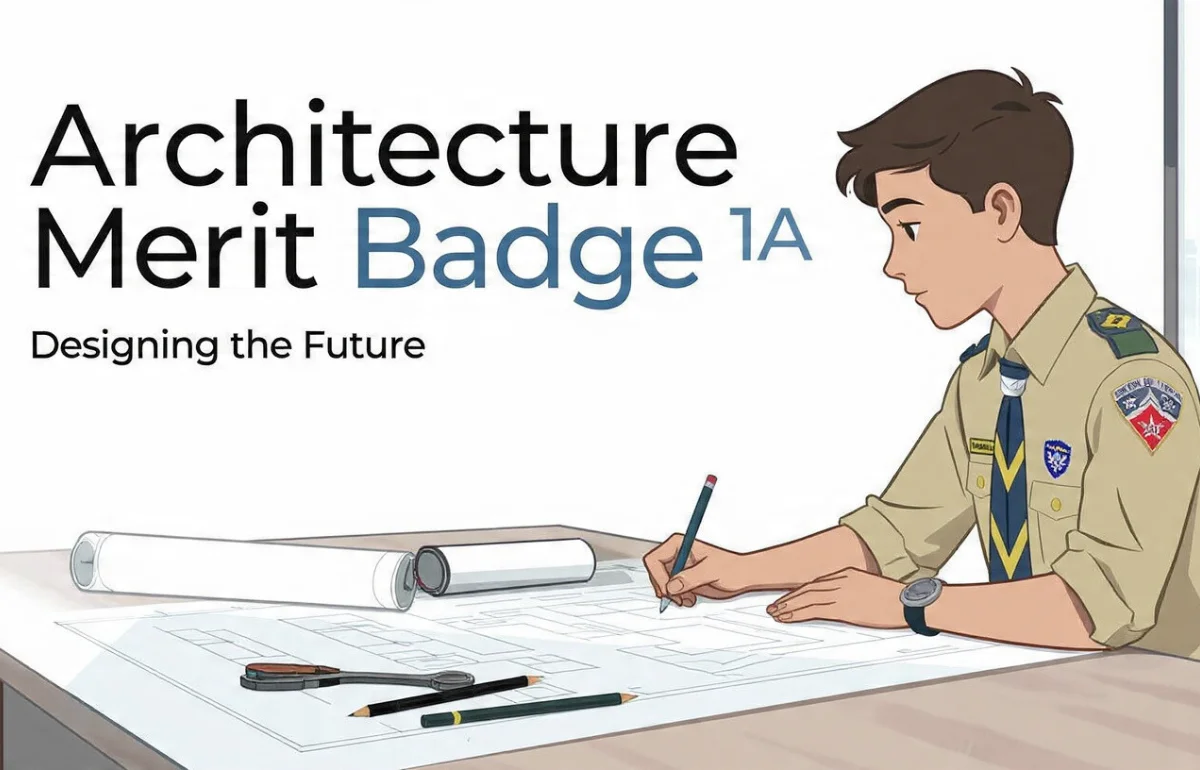
The Architecture Merit Badge 1A is a key step for Scouts interested in exploring the fascinating world of architecture. This badge introduces young learners to the foundational concepts of designing buildings, understanding architectural styles, and the importance of structure and design. It not only teaches valuable skills but also offers an in-depth look into the profession of architecture, providing scouts with a unique perspective on how to bring creative ideas to life. In this article, we’ll dive deep into the significance of the Architecture Merit Badge 1A, what it covers, and how Scouts can successfully complete it.
What is the Architecture Merit Badge 1A?
The Architecture Merit Badge 1A is one of the requirements for earning the Architecture Merit Badge in Boy Scouts. This initial step focuses on understanding the basic elements of architecture, how architects plan and design buildings, and the role of architecture in shaping the environment. Scouts are tasked with completing various activities, including drawing simple plans, researching architectural styles, and exploring the careers of famous architects.
This badge introduces Scouts to the profession in a practical way, allowing them to gain real-world knowledge about what goes into designing and constructing buildings. By the end of the badge process, Scouts should have a clearer understanding of how architectural principles affect the world around them.
Key Concepts Covered in Architecture Merit Badge 1A

Understanding the Role of an Architect
In the Architecture Merit Badge 1A, one of the first steps is to understand what an architect does. Architects are professionals who design buildings and structures that are both functional and aesthetically pleasing. They consider various factors such as space, materials, purpose, and environmental impact when designing a building. Scouts are encouraged to explore these aspects in their project work and research.
Architectural Styles and History
Another critical element of the Architecture Merit Badge 1A is learning about different architectural styles. Scouts are tasked with identifying various historical styles, such as Gothic, Modernism, and Colonial, and understanding the unique features that define each style. This helps Scouts gain a broad understanding of architectural history and how buildings have evolved over time.
Basic Design and Planning
One of the core tasks in Architecture Merit Badge 1A is learning the basics of design. Scouts are asked to create simple plans for buildings or structures, which introduces them to the process of architectural drafting. This can include sketching floor plans, elevations, or even 3D models. This step also teaches Scouts about the importance of scale and proportion in architecture.
A Closer Look at the Merit Badge Requirements
To fully understand the Architecture Merit Badge 1A, let’s break down its core requirements. Here’s a table outlining the different elements and activities that Scouts need to complete as part of the merit badge process.
| Requirement | Activity |
|---|---|
| 1A. Learn about the role of an architect | Research what architects do, including their responsibilities in the design and construction process. |
| 1B. Study different architectural styles | Identify and learn about various architectural styles such as Gothic, Colonial, and Modernism. |
| 1C. Understand the importance of design principles | Learn about scale, proportion, and the planning process behind buildings. |
| 1D. Sketch and plan a simple building design | Create a floor plan or a basic drawing of a building, keeping in mind function and design principles. |
| 1E. Discuss famous architects and their work | Research an architect and discuss their influence on the field, such as Frank Lloyd Wright or Zaha Hadid. |
Completing each of these requirements will allow Scouts to earn the Architecture Merit Badge 1A, offering a solid introduction to the field of architecture.
How to Complete the Architecture Merit Badge 1A
Step 1: Research and Understand the Architect’s Role
Begin by researching the role of an architect. You can do this by reading books, watching documentaries, or interviewing professionals in the field. Understanding what architects do and how they contribute to society is essential in completing this first requirement.
Step 2: Learn About Architectural Styles

As part of the badge, Scouts need to explore different architectural styles. Use resources like websites, architectural books, or local buildings to identify and understand these styles. You can even visit a local museum or historical site to see examples of architectural styles in person.
Step 3: Sketch Your Own Design
Next, Scouts will practice their design skills by creating a basic architectural plan. This could be a small house or community center. By sketching the design, you’ll apply the principles of proportion and function, which are crucial in the architectural profession.
Step 4: Research Famous Architects
Finally, it’s important to explore the works of famous architects. You may want to focus on someone who has had a major impact on modern architecture, such as Le Corbusier or Louis Sullivan. Learning about their careers and how they changed the landscape of architecture can provide great insight into the profession.
FAQs
Conclusion
The Architecture Merit Badge 1A is an excellent introduction to the world of architecture. By completing this requirement, Scouts gain a deeper appreciation for design and construction, along with practical skills in drafting and planning. Whether you’re considering a career in architecture or just curious about the world of design and construction, this merit badge offers a rewarding learning experience. Start your journey today by researching architects, exploring architectural styles, and sketching your designs!
I’m Salman Khayam, the founder and editor of this blog, with 10 years of professional experience in Architecture, Interior Design, Home Improvement, and Real Estate. I provide expert advice and practical tips on a wide range of topics, including Solar Panel installation, Garage Solutions, Moving tips, as well as Cleaning and Pest Control, helping you create functional, stylish, and sustainable spaces that enhance your daily life.
